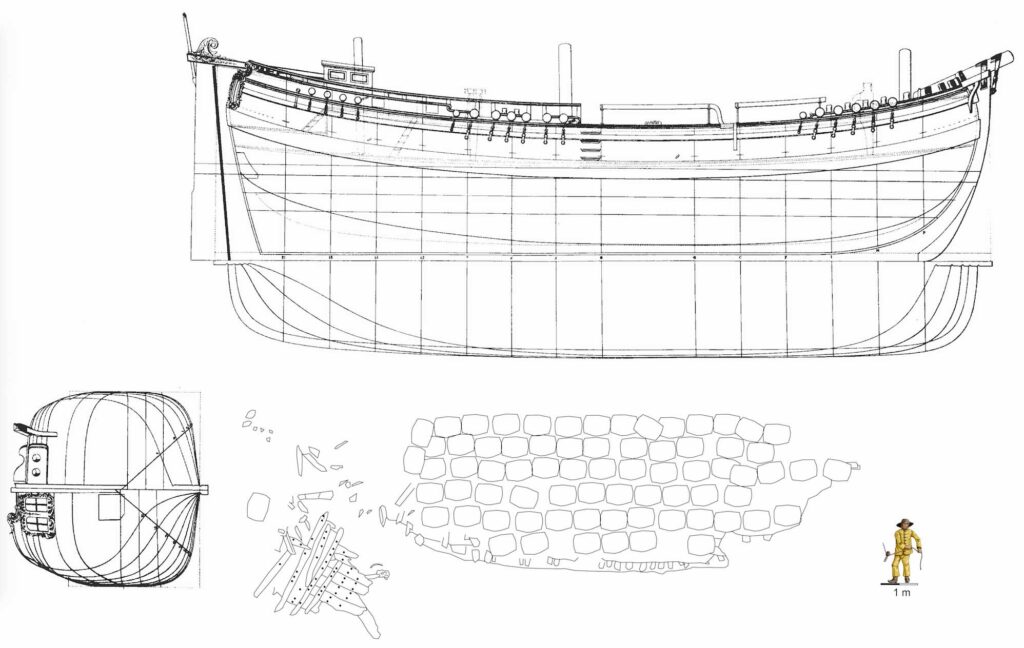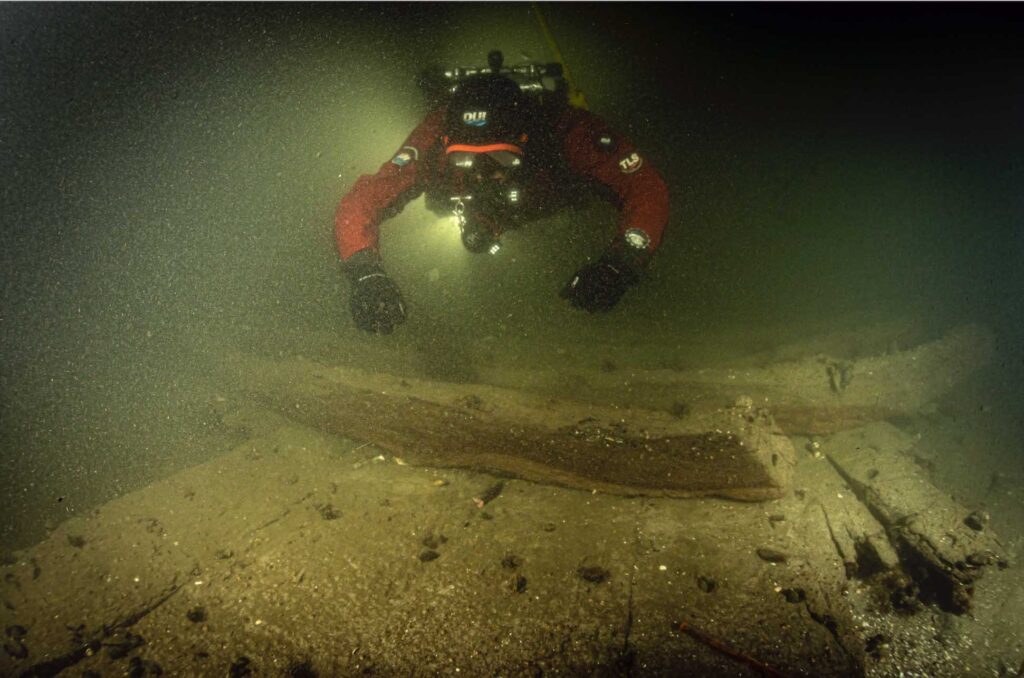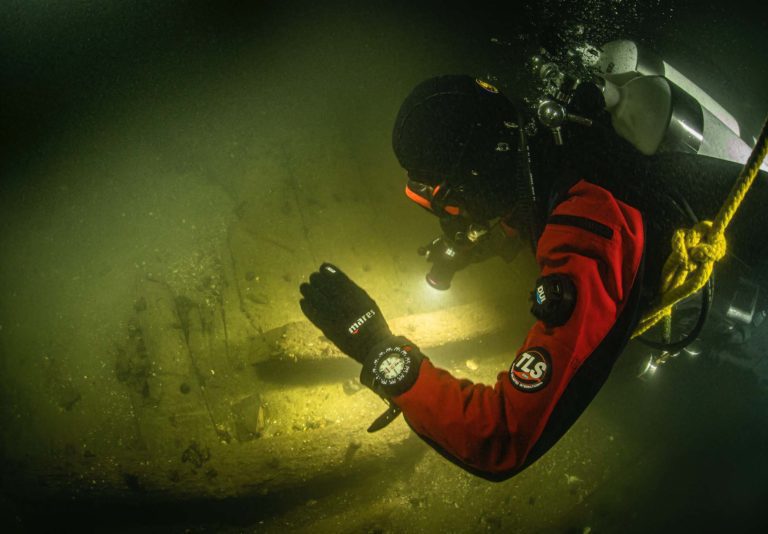An underwater investigation was sparked after puzzling mussel-covered timber beams and barrels containing an unknown cargo were found at a depth of 11m during a waterways authority multibeam echo-sounder survey of the Trave river, near the port of Lübeck in northern Germany.
Divers first investigated the anomaly in August 2021 to rule out any risk to passing shipping. Researchers from Kiel University were then called in, and since last November have carried out 13 dives averaging 36 minutes to establish that the wreck-site is one unique to the western Baltic region.
Also read: 2 lions with apple: 17th-century carvings stun divers
It turns out to be a nearly 400-year-old ship from the Hanseatic period – carrying 150 barrels of quicklime.

“Independent dating of the ship’s timbers in three different laboratories revealed that the ship must have been constructed in the mid-17th century,” reported scientific diver Dr Fritz Jürgens of the university’s Institute of Prehistoric & Protohistoric Archaeology. “You always hope to make a find like this and suddenly you have one right before your eyes. It is really unique – also for me personally.”

Dr Jürgens and a team from the university’s scientific diving centre explored the wreck-site with researchers from the Hanseatic City of Lübeck and University of Gottingen, but it was Kiel’s Institute of Geosciences that identified the cargo as the building material quicklime.
“In the Middle Ages and early modern period, limestone was quarried, fired and then extinguished. This was made into mortar,” said Dr Jürgens.
The Hanseatic ship is thought to have been heading from Scandinavia to Lübeck. The reason for its sinking is unconfirmed, though it might have run aground in shallows on a river-bend.
From last December the underwater archaeologists were joined by scientific diver Christian Howe, an experienced underwater photographer and cameraman. Using 3D models based on the divers’ photos and videos, the vessel was estimated to be 20-25m long, making it a typiucal medium-sized “workhorse” of Baltic Sea trade.
However, while similar wrecks dating from different centuries have been found before, they have been confined to the eastern Baltic region until now.

The dives revealed the shipwreck to be at serious risk of erosion, with exposed parts infested with shipworm, which can be present in rivers though not the Baltic Sea itself. Kiel University is now working with the other interested parties to come up with a protection strategy, including the possibility of salvaging and preserving the wreck.
Also on Divernet: Vrak Divers Find 10 More Baltic Wrecks, 6 Historic Wrecks ID’d For Diver Trail, Divers Find Barricade ‘Forest’ In Baltic, Exploring Baltic Shipwrecks In Sweden

